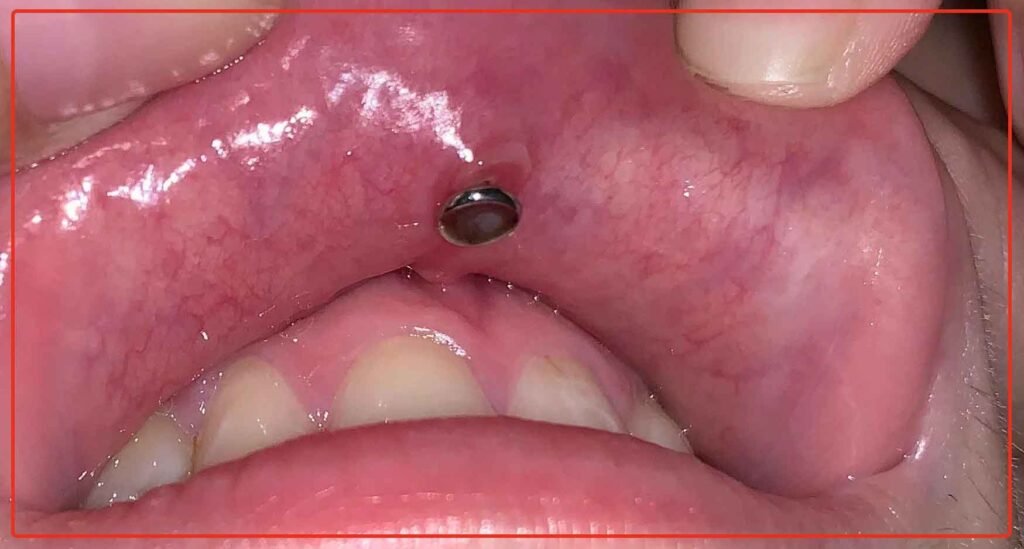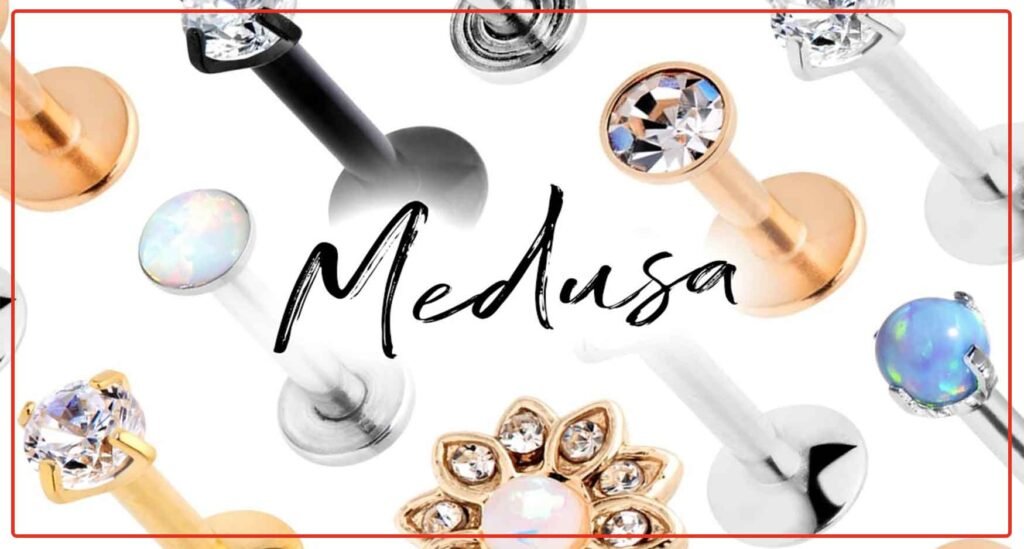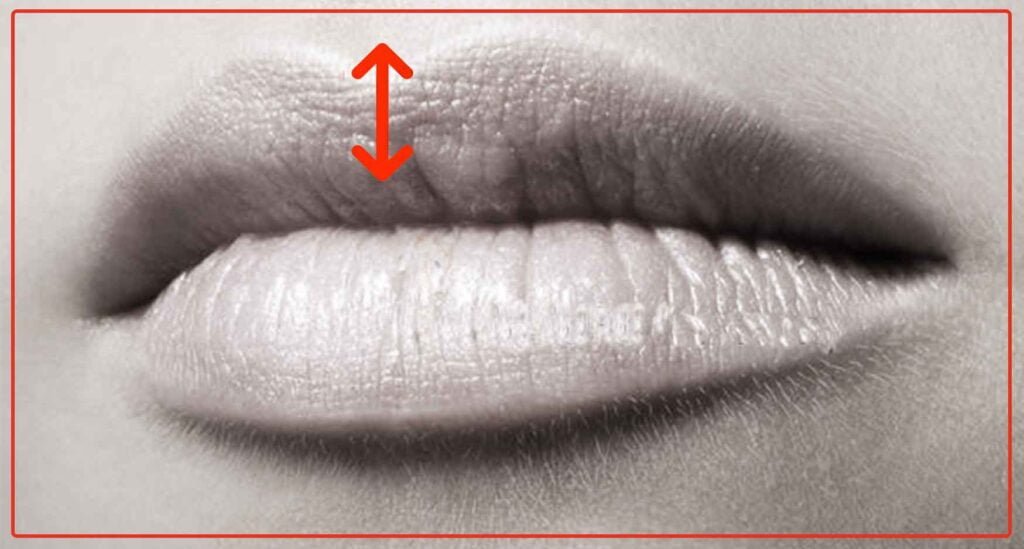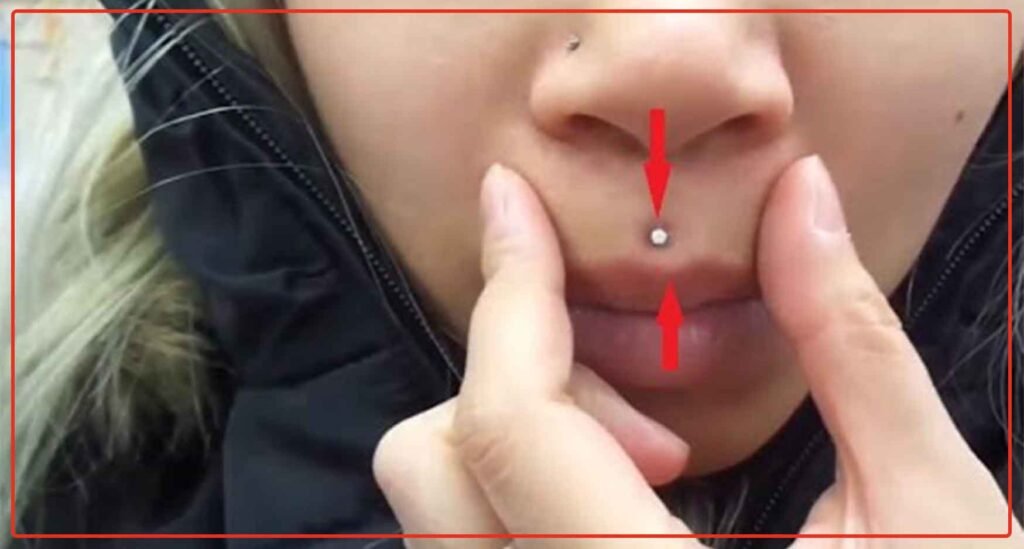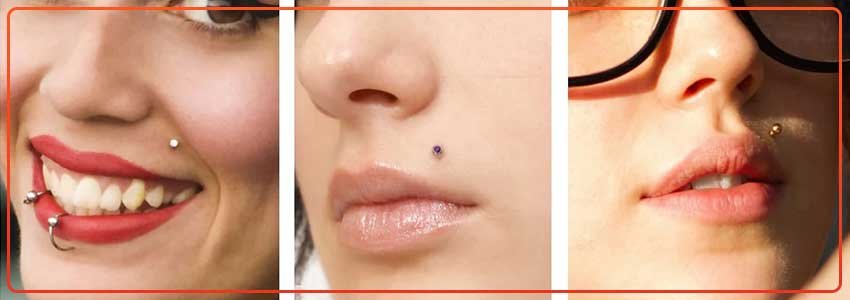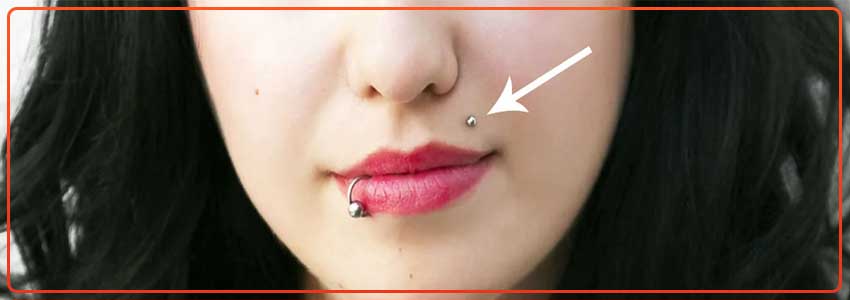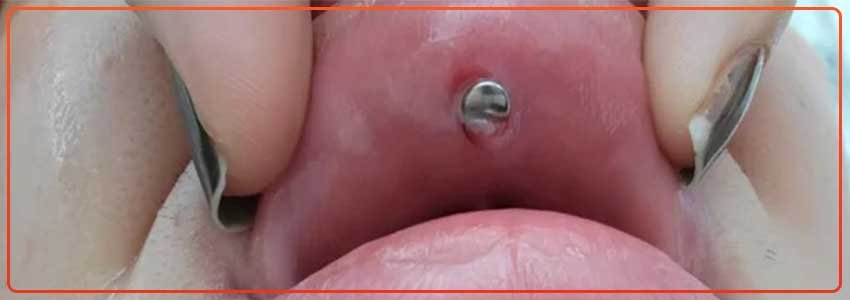Medusa piercing is a popular type of lip piercing that has gained popularity in recent years. This piercing is named after the Greek mythological character, Medusa, who was said to have snakes for hair. If you’re considering getting a medusa piercing, then it’s important to know everything about it before making a decision. In this article, we’ll discuss everything you need to know about medusa piercing, from the procedure to aftercare.
What is a Medusa Piercing?
A medusa piercing is a type of lip piercing that is located in the center of the upper lip, just above the cupid’s bow. It is also known as a philtrum piercing. This piercing is done vertically, with a small barbell or a labret stud, and usually, it is done with a 16-gauge or 14-gauge needle.
Medusa Piercing Procedure
Before getting a medusa piercing, it is important to choose a reputable piercer who has experience with this type of piercing. The piercer will clean the area around the upper lip with an antiseptic solution and then mark the spot where the piercing will be done. Then, they will use a sterilized needle to make the piercing. After the piercing is done, the piercer will insert a small barbell or a labret stud.
Medusa Piercing Pros and Cons
Medusa piercings, also known as philtrum piercings, have gained popularity in recent years for their unique and edgy look. Like any type of body modification, medusa piercings have both pros and cons. Here are some of the advantages and disadvantages to consider before getting a medusa piercing:
Pros:
- Unique and eye-catching: Medusa piercings are not as common as other facial piercings, such as nostril or lip piercings, so they can help you stand out and express your individuality.
- Versatile: Medusa piercings can be worn with a variety of jewelry styles, from simple studs to more elaborate designs, allowing you to switch up your look to suit your mood or outfit.
- Easy to conceal: If you need to hide your piercing for work or other situations, a small stud or clear retainer can be used to make the piercing less visible.
Cons:
- Painful and slow healing: Medusa piercings are typically considered to be more painful than other facial piercings, and they can take longer to heal due to their location in the delicate philtrum area.
- Risk of infection: Like any piercing, medusa piercings can be prone to infection if proper aftercare is not followed. Infections can cause pain, and swelling, and delay the healing process.
- Potential dental damage: The placement of a medusa piercing can cause friction against the gums and teeth, potentially leading to dental problems such as gum recession or tooth chipping.
In conclusion, medusa piercings have both pros and cons to consider before getting one. It’s important to do your research, consult with a reputable piercer, and carefully consider the potential risks and benefits before making a decision. With proper aftercare and attention to your oral health, a medusa piercing can be a beautiful and unique addition to your look.
Medusa Piercing Healing Process
The healing process for medusa piercing usually takes about 6 to 12 weeks. During this time, it is important to take care of the piercing to prevent infections and promote healing. It is recommended to avoid smoking, drinking alcohol, and spicy foods for the first few days after the piercing. It’s also important to avoid touching the piercing with dirty hands and to clean the area regularly with saline solution.
Medusa Piercing Aftercare
After getting a medusa piercing, it’s essential to take proper care of it to prevent infections and promote healing. Here are some aftercare tips to follow:
- Clean the piercing with saline solution twice a day.
- Avoid smoking, drinking alcohol, and spicy foods for the first few days after the piercing.
- Don’t touch the piercing with dirty hands.
- Don’t change the jewelry until the piercing has fully healed.
- Avoid swimming in pools or hot tubs for the first few weeks after the piercing.
Medusa Piercing Jewelry: What Materials Are Safe and Recommended?
When it comes to medusa piercing jewelry, it’s essential to choose materials that are both safe and recommended for this type of piercing. Here are some of the most common materials used for medusa piercing jewelry:
Surgical Stainless Steel
Surgical stainless steel is a popular choice for medusa piercing jewelry because it is hypoallergenic and affordable. It is also durable and easy to clean, making it a low-maintenance option.
Titanium
Titanium is another hypoallergenic material that is commonly used for medusa-piercing jewelry. It is lightweight and has a higher resistance to corrosion than stainless steel, making it a good choice for people with sensitive skin.
Bioplast
Bioplast is a flexible, biocompatible material that is ideal for people with metal allergies. It is also comfortable to wear and can be sterilized, making it a safe and hygienic option.
Gold
Gold is a popular choice for medusa piercing jewelry because it is both beautiful and hypoallergenic. However, it is essential to choose high-quality, solid gold to avoid the risk of allergic reactions to impurities.
Acrylic
Acrylic is a lightweight, colorful material that is commonly used for decorative medusa-piercing jewelry. However, it is not recommended for initial piercings because it can harbor bacteria and is difficult to sterilize.
When choosing medusa piercing jewelry, it’s important to avoid materials that are known to cause allergic reactions, such as nickel or brass. It’s also important to choose jewelry that is the right size and shape for your piercing to avoid complications such as migration or rejection. Be sure to discuss your options with a reputable piercer who can help you make the right choice for your needs and preferences.
What Gauge is a Medusa Piercing
The gauge size of a medusa piercing refers to the thickness of the jewelry that is inserted into the piercing hole. The most common gauge size for a medusa piercing is 16 gauge, but it can range from 14 gauge to 18 gauge depending on the individual’s preference and the initial piercing size.
It’s important to choose the appropriate gauge size for your medusa piercing to ensure a comfortable and safe healing process. A smaller gauge size may be more comfortable for those with thinner philtrum tissue or for those who prefer a more subtle look, while a larger gauge size may be preferred for those who want a more pronounced or dramatic appearance.
When choosing a gauge size, it’s also important to consider the material of the jewelry. Materials like surgical steel or titanium are commonly used for medusa piercings as they are hypoallergenic and less likely to cause irritation or infection. However, if you have a known allergy to certain materials, it’s important to choose a jewelry option that is compatible with your body.
Ultimately, the gauge size of your medusa piercing will depend on your personal preference and the recommendation of your piercer. By working with a professional and taking proper care of your piercing, you can ensure a comfortable and successful healing process.
Pain and Healing Time
Like any other piercing, medusa piercing can cause some pain and discomfort during the procedure. However, the pain level varies from person to person, and some people may feel more pain than others. The healing time for medusa piercing usually takes around 6 to 12 weeks, depending on how well the piercing is taken care of.
Risks and Complications
Like any other piercing, medusa piercing comes with some risks and complications, including:
- Infection
- Swelling
- Pain
- Bleeding
- Scarring
To avoid these risks and complications, it’s essential to choose a reputable piercer, take proper care of the piercing, and follow the aftercare instructions.
Preventing and Treating Infections in Medusa Piercings
Medusa piercings, like any other type of piercing, can be prone to infections if proper aftercare measures are not taken. Infections can occur due to bacteria, viruses, or fungi that enter the body through the piercing site. Here are some tips for preventing and treating infections in medusa piercings:
Cleanse the piercing daily
Keeping your medusa piercing clean is essential to preventing infections. Cleanse the area with a saline solution or mild soap and warm water twice a day. Avoid using alcohol, hydrogen peroxide, or other harsh chemicals, as these can dry out the skin and delay healing.
Avoid touching the piercing
Touching your medusa piercing with dirty hands can introduce bacteria into the piercing site, increasing the risk of infection. If you need to adjust your jewelry, wash your hands thoroughly first.
Avoid swimming or soaking
Avoid swimming or soaking in bodies of water such as pools, hot tubs, or lakes until your piercing has fully healed. These environments can harbor bacteria and other microorganisms that can cause infections.
Monitor the piercing for signs of infection
Signs of an infected medusa piercing include redness, swelling, discharge, and pain. If you notice any of these symptoms, contact your piercer or healthcare provider for advice on how to treat the infection.
Treat infections promptly
If you do develop an infection, it’s important to seek treatment promptly. Your healthcare provider may prescribe antibiotics or other medications to help clear the infection. It’s also important to continue caring for your piercing as directed by your piercer or healthcare provider.
In conclusion, preventing and treating infections in medusa piercings requires diligence and attention to proper aftercare. By following these tips and seeking prompt treatment for infections, you can enjoy your medusa piercing with confidence and peace of mind.
Changing the Medusa Piercing Jewelry
It’s important to wait until the piercing has fully healed before changing the jewelry. This usually takes around 6 to 12 weeks. After the piercing has healed, it’s essential to clean the new jewelry thoroughly before inserting it.
Cost of Medusa Piercing?
The cost of a medusa piercing can range from $40 to $100 or more, depending on the factors mentioned above. It’s essential to choose a reputable piercer who uses high-quality, sterile equipment to ensure that the piercing is done safely and correctly.
Medusa Piercing Aftercare Tips
Proper aftercare is essential for a successful healing process and to avoid complications. Here are some additional tips to ensure that your medusa piercing heals properly:
- Avoid using mouthwash or oral rinses that contain alcohol.
- Don’t touch the piercing unless you need to clean it.
- Avoid kissing or oral sex for the first few weeks after getting the piercing.
- Use a clean towel to dry the piercing after cleaning it.
- Don’t play with the jewelry or move it around too much.
- If you notice any signs of infection, such as redness, swelling, or discharge, contact your piercer or a medical professional immediately.
Side Effects of Medusa Piercing
Medusa piercing, like any other type of body piercing, can cause side effects. While the risks are relatively low, it’s essential to be aware of potential complications before getting the piercing. Here are some of the side effects that you should be aware of:
- Infection: Infection is one of the most common side effects of any piercing, including medusa piercing. Signs of infection include redness, swelling, discharge, and pain. If you suspect that your piercing is infected, seek medical attention immediately.
- Allergic reactions: Some people may be allergic to the metal used in their medusa piercing jewelry, which can cause an allergic reaction. Symptoms of an allergic reaction include itching, redness, and swelling. If you experience these symptoms, you should consult with your piercer or a medical professional.
- Keloid formation: Keloids are raised scars that can form around a piercing site. While keloids are not harmful, they can be unsightly and may require medical treatment to remove them.
- Damage to teeth and gums: The placement of a medusa piercing can potentially damage teeth and gums, particularly if the jewelry rubs against them. To minimize this risk, it’s essential to choose a reputable piercer who will place the piercing in the proper location.
- Rejection: In rare cases, the body may reject a medusa piercing, causing it to migrate out of the skin. Signs of rejection include pain, swelling, and the piercing becoming increasingly shallow.
To minimize the risk of side effects, it’s essential to choose a reputable piercer who uses sterile equipment and follows proper hygiene practices. It’s also important to follow the aftercare instructions provided by your piercer to ensure that your piercing heals correctly. If you experience any side effects, seek medical attention immediately.
How to Remove a Medusa Piercing Safely
If you’ve decided to remove your medusa piercing for any reason, it’s important to do it safely to avoid damaging the surrounding tissue or causing infection. Here’s a step-by-step guide on how to safely remove a medusa piercing:
- Wash your hands thoroughly with soap and water before touching your piercing.
- Use a saline solution or sea salt soak to clean the area around the piercing and help loosen any discharge or crust that may have accumulated.
- Gently twist the jewelry back and forth to break any adhesions or scar tissue that may have formed around the piercing.
- Slowly and carefully pull the jewelry out of the piercing hole. If it feels stuck, do not force it out as this can cause damage to the tissue or even tear the piercing hole.
- Once the jewelry is removed, clean the area again with a saline solution or sea salt soak to help soothe the tissue and prevent infection.
- Keep the area clean and avoid touching or irritating it while it heals.
It’s important to note that if you experience any pain, redness, or swelling after removing your medusa piercing, an infection or other issue may be present. In this case, it’s best to seek the advice of a professional piercer or medical provider for further guidance on how to care for the area and prevent complications.
Summary
In summary, removing a medusa piercing can be done safely and effectively with the right care and attention to the area. By following these steps and being gentle and patient with the process, you can help ensure a smooth and comfortable healing process.
Frequently Asked Questions
Why is it called a medusa piercing?
The medusa piercing is named after the mythical Greek figure Medusa, who was said to have snakes for hair and a gaze that turned people to stone. The piercing is located in the philtrum area, which is the vertical groove in the center of the upper lip and is said to resemble the piercing gaze of Medusa. It’s also known as a philtrum piercing, but the term “medusa” has become more commonly used.
Does medusa piercing hurt?
Like any other piercing, medusa piercing can cause some pain and discomfort during the procedure. However, the pain level varies from person to person, and some people may feel more pain than others.
Can I wear lipstick with a medusa piercing?
You can wear lipstick with a medusa piercing, but it’s important to avoid using products that contain alcohol or other harsh chemicals that can irritate the piercing.
Can I eat and drink normally after getting a medusa piercing?
Yes, you can eat and drink normally after getting a medusa piercing. However, you should avoid spicy foods, alcohol, and smoking for the first few days after getting the piercing.
How long does it take for a medusa piercing to heal?
The healing time for a medusa piercing usually takes around 6 to 12 weeks, depending on how well the piercing is taken care of.
Can I change the jewelry myself?
It’s best to have a professional piercer change your medusa piercing jewelry, especially if you’re doing it for the first time. A piercer will have the proper equipment and experience to ensure that the process is safe and hygienic.
Conclusion
Medusa piercing is a popular type of lip piercing that requires proper aftercare to ensure that it heals correctly and without complications. By choosing a reputable piercer, taking proper care of the piercing, and following the aftercare instructions, you can enjoy your new piercing without any issues. If you’re considering getting a medusa piercing, make sure to do your research and ask your piercer any questions you may have beforehand.

